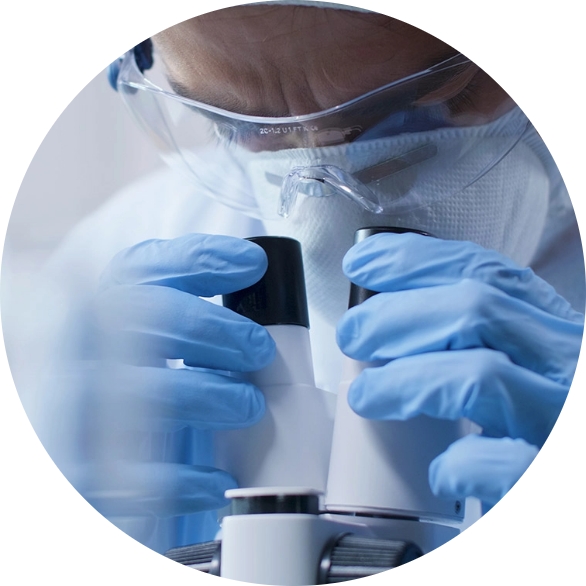What is FISH analysis of sperm?
FISH (Fluorescent In Situ Hybridization) analysis of sperm is a diagnostic test used to identify abnormalities in the number of chromosomes (aneuploidies) within sperm cells. This analysis detects the absence or duplication of entire chromosomes, which are often associated with spontaneous miscarriages and can lead to the transmission of chromosomal abnormalities to offspring.

Why is this examination important?
Human DNA is organized into 44 autosomal chromosomes and two sex chromosomes (XX for females and XY for males), inherited from both parents. The egg contributes 22 autosomal chromosomes and one X sex chromosome, while the sperm provides the remaining 22 autosomal chromosomes along with either an X or Y sex chromosome, determining the child’s sex. If a sperm cell with chromosomal abnormalities (aneuploidies) fertilizes an egg, the resulting embryo may have an abnormal chromosome count, potentially leading to conditions incompatible with life or to the birth of a child with a chromosomal disorder (e.g., Down syndrome, Klinefelter syndrome, Turner syndrome).
An elevated aneuploidy index in a man, as indicated by an abnormal Sperm FISH result, can:
- Increase the likelihood of miscarriages, with up to 60% of pregnancies ending in miscarriage.
- Lower the success rate of pregnancies following assisted reproduction treatment, particularly with intracytoplasmic sperm injection (ICSI).
- Raise the risk of having offspring with chromosomal abnormalities (e.g., Down syndrome, Klinefelter syndrome, Turner syndrome).
How is it performed?
For the examination, a semen sample is required after 2-3 days of abstinence from ejaculation. After appropriate processing of the semen including Fluorescent In Situ Hybridization (FISH), the individual chromosomes 13, 15, 16, 18, 21, 22, X and Y are labeled with specific probes and their presence or absence in each sperm cell is analyzed under a fluorescence microscope. For each chromosome, the test provides a percentage indicating the level of aneuploidy, based on whether more or fewer chromosomes than expected are detected.

Who should undergo this test?
This examination is recommended for men with:
- Low sperm parameters, particularly in cases of oligoasthenoteratozoospermia
- Recurrent miscarriages (≥ 2 miscarriages)
- Recurrent implantation failures
- Previous pregnancy with chromosomal abnormality
- History of chemotherapy and/or radiotherapy
- Unexplained infertility
Why is FISH useful?
- This method helps identify men with a lower chance of reproductive success, enabling more informed decisions about fertility treatments.
- It serves as a valuable tool for providing personalized genetic counseling to infertile couples before proceeding with IVF methods, such as pre-implantation testing.


Are there any limitations?
This technique can only detect numerical and not structural chromosomal abnormalities or gene-level abnormalities. Only chromosomes 13, 15, 16, 18, 21, 22, X and Y, which are the most important ones, are examined. Finally, in some samples derived either from ejaculation or testicular tissue, there may not be enough spermatozoa, making it difficult to accurately assess the presence of aneuploidy.